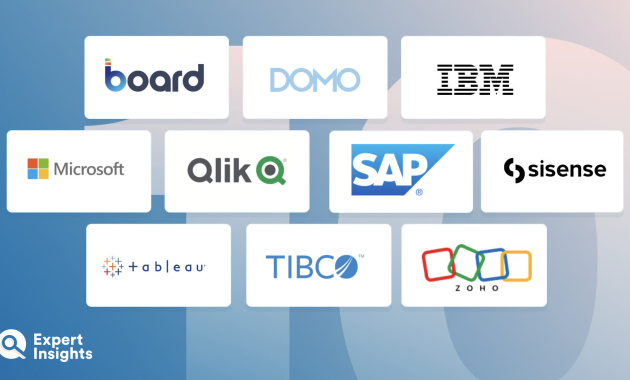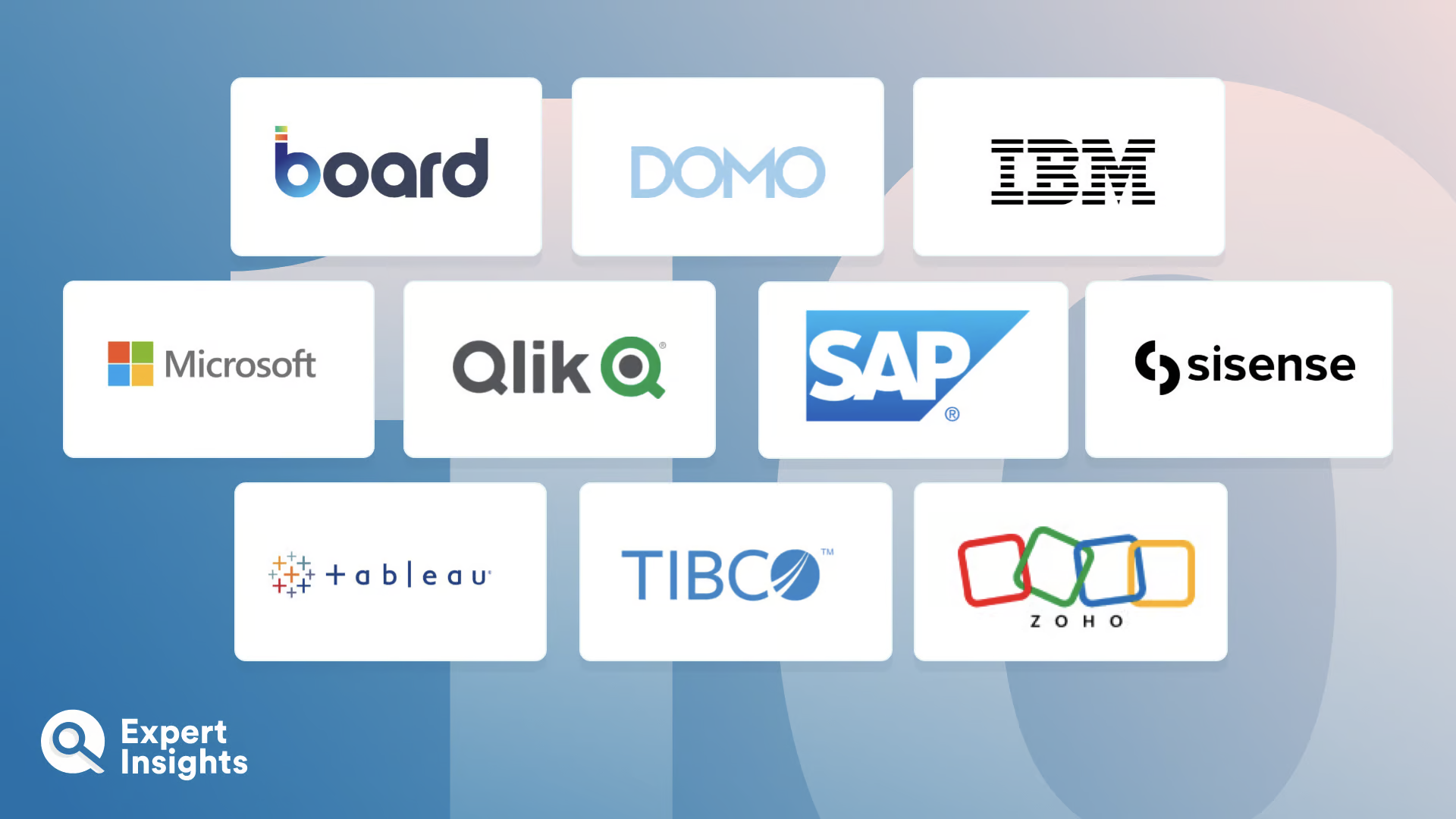
Business Intelligence Tools That Outsmart Spreadsheets: A Data-Driven Revolution
The business world is drowning in data. Every click, transaction, and interaction generates a deluge of information. For decades, spreadsheets have been the go-to tool for analyzing this data, but their limitations are becoming increasingly apparent. In today’s dynamic business landscape, business intelligence tools offer a sophisticated alternative, empowering organizations to unlock deeper insights and make more informed decisions. This article delves into the rise of business intelligence tools, exploring how they surpass the capabilities of spreadsheets and transform the way businesses operate.
The Spreadsheet Ceiling: Why Excel Isn’t Enough
Spreadsheets, particularly Microsoft Excel, have served as a foundational tool for data analysis for many years. They are readily accessible, relatively easy to learn, and offer basic functionality for data organization and calculation. However, as data volumes and complexity grow, spreadsheets begin to reveal their shortcomings. These limitations include:
- Data Volume Constraints: Spreadsheets struggle to handle massive datasets. Performance degrades significantly when dealing with large files, leading to slow processing times and potential crashes.
- Limited Analytical Capabilities: While spreadsheets offer basic charting and analysis, they lack the advanced features required for sophisticated data exploration. Complex statistical analysis, predictive modeling, and advanced visualizations are difficult or impossible to achieve.
- Data Integration Challenges: Spreadsheets typically work with data in a single file or from a limited number of sources. Integrating data from multiple databases, cloud services, and other systems is a manual and time-consuming process.
- Collaboration Difficulties: Sharing and collaborating on spreadsheets can be cumbersome. Version control, security, and real-time updates can pose significant challenges, leading to errors and inefficiencies.
- Lack of Automation: Spreadsheets require manual intervention for many tasks, such as data cleaning, report generation, and data updates. This manual effort is time-consuming and prone to human error.
These limitations highlight the need for more powerful and versatile business intelligence tools.
Enter Business Intelligence: A New Era of Data Analysis
Business intelligence tools (BI tools) are software applications designed to collect, process, analyze, and visualize data from various sources. They provide a comprehensive platform for understanding business performance, identifying trends, and making data-driven decisions. Key features of BI tools include:
- Data Integration: BI tools can connect to various data sources, including databases, cloud services, and spreadsheets, consolidating data into a unified view.
- Data Transformation: BI tools offer data cleaning, transformation, and preparation capabilities, ensuring data quality and consistency.
- Advanced Analytics: BI tools provide a wide range of analytical features, including statistical analysis, data mining, predictive modeling, and what-if analysis.
- Data Visualization: BI tools offer powerful visualization capabilities, enabling users to create interactive dashboards, charts, and reports that communicate insights effectively.
- Collaboration and Sharing: BI tools facilitate collaboration and sharing, allowing users to securely share dashboards, reports, and insights with others.
- Automation: BI tools automate many tasks, such as data updates, report generation, and data alerts, saving time and reducing manual effort.
Business intelligence tools represent a significant leap forward from spreadsheets, offering a more efficient, powerful, and user-friendly approach to data analysis.
Key Benefits of Using Business Intelligence Tools
The adoption of business intelligence tools offers a multitude of benefits for organizations of all sizes:
- Improved Decision-Making: BI tools provide a holistic view of business performance, empowering decision-makers with data-driven insights.
- Enhanced Efficiency: Automation and streamlined data analysis processes reduce manual effort and save time.
- Increased Revenue: By identifying trends, opportunities, and customer behavior, BI tools can help organizations increase revenue and profitability.
- Reduced Costs: BI tools can help organizations optimize operations, identify cost-saving opportunities, and improve resource allocation.
- Better Customer Understanding: BI tools enable organizations to gain a deeper understanding of their customers, leading to improved customer satisfaction and loyalty.
- Competitive Advantage: By leveraging data insights, organizations can gain a competitive advantage over their rivals.
These benefits demonstrate the transformative power of business intelligence tools in today’s data-driven business environment. They help organizations make better, faster, and more informed decisions.
Top Business Intelligence Tools to Consider
The market is filled with a variety of business intelligence tools, each with its own strengths and weaknesses. Some of the leading tools include:
- Tableau: Known for its intuitive interface and powerful data visualization capabilities, Tableau is a popular choice for businesses of all sizes. It allows users to create stunning dashboards and reports with ease.
- Microsoft Power BI: Integrated with the Microsoft ecosystem, Power BI offers a comprehensive set of features, including data integration, data transformation, and advanced analytics. It’s a cost-effective solution for many organizations.
- Qlik Sense: Qlik Sense is a self-service BI tool that utilizes an associative data model, allowing users to explore data in a flexible and intuitive way. It excels at uncovering hidden insights.
- Looker: Acquired by Google, Looker is a powerful BI platform that focuses on data modeling and governance. It is a good choice for organizations with complex data needs.
- Sisense: Sisense is a platform that focuses on embedded analytics, enabling organizations to integrate BI insights into their applications and workflows.
The best BI tool for a particular organization depends on its specific needs and requirements. Factors to consider include data volume, analytical complexity, budget, and user skill level. Researching and testing different tools is crucial before making a final decision. Choosing the right business intelligence tool is vital.
Making the Transition: From Spreadsheets to Business Intelligence
Transitioning from spreadsheets to business intelligence tools requires careful planning and execution. Here are some key steps to consider:
- Assess Your Needs: Identify your business goals, data sources, and analytical requirements. Determine what insights you need to gain and what questions you want to answer.
- Choose the Right Tool: Research and evaluate different BI tools based on your needs and budget. Consider factors such as ease of use, features, and scalability.
- Data Preparation: Prepare your data for analysis by cleaning, transforming, and integrating it from various sources. This is a critical step for ensuring data quality.
- Build Dashboards and Reports: Create interactive dashboards and reports that visualize your data and communicate key insights. Focus on user-friendliness and clarity.
- Train Your Team: Provide training to your team on how to use the BI tool and interpret the data. This will ensure that everyone can effectively leverage the insights.
- Monitor and Refine: Continuously monitor your dashboards and reports, and refine them based on feedback and evolving business needs.
The transition to business intelligence tools is an investment, but the rewards are substantial. Organizations that embrace data-driven decision-making are well-positioned for success. They can adapt to changing market conditions and gain a competitive edge.
The Future of Data Analysis: Beyond Spreadsheets
The future of data analysis is undoubtedly in the hands of business intelligence tools. As data volumes continue to explode and business environments become increasingly complex, spreadsheets will struggle to keep pace. Business intelligence tools offer the scalability, analytical power, and collaborative capabilities needed to thrive in the data-driven era.
The ongoing advancements in areas like artificial intelligence (AI) and machine learning (ML) are further enhancing the capabilities of BI tools. Automated insights, predictive analytics, and personalized dashboards are becoming increasingly common, enabling organizations to unlock even deeper insights and make more proactive decisions. The integration of AI and ML with business intelligence tools is a game-changer. It is revolutionizing how businesses analyze data and gain valuable information. It is transforming the way companies operate.
Business intelligence tools are not just a trend; they are a fundamental shift in how businesses operate. Organizations that embrace these tools and prioritize data-driven decision-making will be well-positioned to succeed. The future of business is data, and business intelligence tools are the key to unlocking its potential.
Conclusion
Business intelligence tools are no longer a luxury; they are a necessity for businesses seeking to thrive in today’s data-driven world. By moving beyond the limitations of spreadsheets and embracing the power of BI, organizations can unlock valuable insights, improve decision-making, and gain a competitive advantage. The transition may require effort, but the long-term benefits are undeniable. As the business landscape continues to evolve, business intelligence tools will remain essential for organizations that want to stay ahead of the curve. They are the key to data-driven success.
[See also: Related Article Titles]

